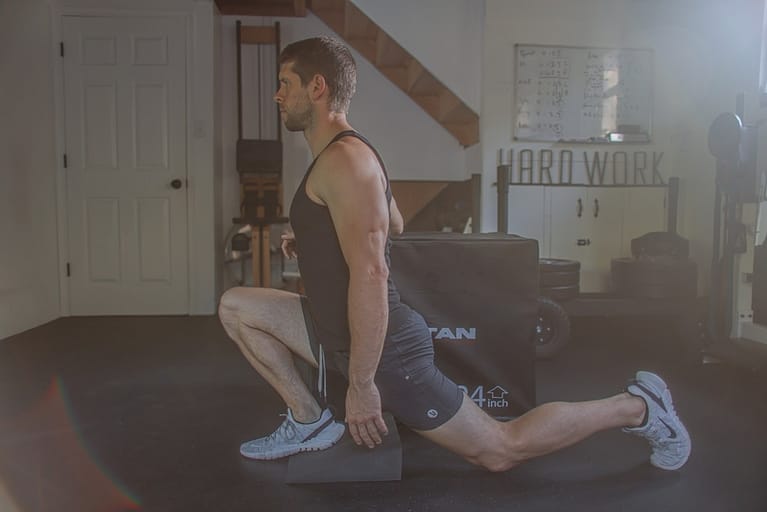How to Bench Press 225 lbs
A step by step approach to lifting four plates
Bench pressing 225 lbs is a significant milestone in the world of strength training. For many lifters, the bench press is a staple in their training and bench pressing 2 plates on each side of the bar is a common goal, especially for those training in powerlifting or bodybuilding.
Below I am going to go over the key elements to bench pressing 225 lbs.
Whether you’re an advanced lifter or a novice, anyone can increase their bench if they focus on a perfect setup, increasing volume, strengthening weak points, using exercise variation and being consistent.
Bench Pressing 225: How hard can it be?
Bench pressing 225 lbs is often viewed as a standard goal for intermediate to advanced lifters. While the exact number of people who can bench press 225 lbs is difficult to determine, it’s estimated that only a small percentage (maybe less than 1%) of the population can achieve this feat. Attaining a 225 lb bench press certainly doesn’t make you an elite lifter but it does require consistent training and focus.
While bench pressing 225 lbs is considered a milestone, it is far from elite
Build a Strong Foundation
Achieving a 225 lb bench press requires a strategic combination of strength, technique and consistency. You are going to need either great form or a decent amount of muscle mass. I would prefer you have both! Let’s focus on the form first and build a great foundation from which to bench. This will not only put you in a great position to press more weight, but also protect your shoulders from injury.
To improve your bench technique we need to address:
- Upper Back Position
- Foot Placement
- Proper Arch
- Hand Placement
Upper Back Position
Your upper back is what is going to turn your bench press from an upper body lift to a full body lift. It will allow you to use your legs to help drive the bar back up. But more on that in a moment.
When you lie down on the bench, retract your shoulder blades and put them in your back pocket. Your shoulder blades should be retracted and depressed to ensure good shoulder position. This also cuts down on the range of motion needed to perform the bench press because it brings your chest closer to the bar before you even lower the bar!
Pretend you are performing a row and put your upper back on the bench. This upper back position is important so that when you utilize your leg drive, your upper back position will prevent you from sliding around on the bench.
Setting up Your Arch
After retracting your shoulder blades and wedging them into the bench, you will want to put your feet a little in front of your knees, flat on the ground.
Have you ever trained the decline bench press? A bench set up with a good arch feels more like a decline bench press. Personally, I feel like I can use my chest more with a decline bench press. During a flat bench, I feel my anterior deltoids and triceps more.
Foot and Hand Position
Your feet should be positioned just under or just in front of your knees. Your foot position may depend upon your flexibility.
Keep your feet flat on the floor. Push with your feet as if you are trying to slide yourself up towards the bar. Don’t push your heels directly into the floor, that will only translate into your hips shooting off the bench.
Grip the Bar Correctly
Keep your hands slightly shoulder width apart or slightly wider.
To find your ideal hand position, lie down on a bench with an empty bar. Unrack the bar and lower it to your chest. Check out your forearms. They should be perpendicular to the floor. Move your hands to where they are perpendicular to the floor.
No suicide grips! Wrap those thumbs around the bar. I don’t want you dropping the bar on yourself. 225 lbs to the chest hurts!
Maintaining Good Form
Keep your feet firmly planted on the floor. Don’t let them shift around or lift them off when bench pressing. Some people experience low back pain and would prefer to place their feet on the bench to alleviate this. My suggestion would be to place pads underneath their feet so that they are still in a conventional bench press position. Over time you can slowly work down to having their feet back on the floor. Bracing your core and keeping your abs tight can also help with this.
Lower the barbell to nipple height. Keep your elbows around a 45 degree angle and don’t let your elbows flare too much when pressing the weight back up. This puts excessive stress on your shoulders.
Lower the bar slowly and with control. Once it touches your chest (don’t bounce it) push the bar back to the top with power. The bar should follow a slight arc rather than just be in a straight line.
Improving your bench press takes time and effort but here are the things that have helped me the most.
Before adding more weight, ensure that your form is consistent and correct. Lifting with poor mechanics can not only get you injured, but it actually may be what holds you back from performing your best. It’s ok to back the weight down to focus on proper lifting mechanics.
Practice, Progressive Overload and Training Volume
Practice your Technique
Every pressing movement, including the bench press, responds well to frequent practice.
Progressive Overload
Reaching 225 lbs is a sign of consistent training, long term training. Gradually increase the weight on the bar in order to progress safely. Incremental increases, whether adding 5 or 10 lbs is key for increasing your bench press one rep max.
Training Volume
Training volume is VERY important when it comes to the bench press. For whatever reason, the bench press responds very well to frequent consistent training, as long as you can recover from your sessions.
My favorite training volume framework for increasing your bench press is 3 sessions per week (monday, wednesday, friday) with a goal of 24 total repetitions. For instance, on monday you would start with a warmup set until you get to your working weight. Let’s say your working weight is 185. You will try to get a TOTAL of 24 reps in as few sets as possible.
Your goal is to utilize a weight that you can get to 24 reps in 3-5 sets.
If it takes you more than 5 sets, the weight is too heavy. You should average around 8 reps per set. If you are only getting 3-4 reps per set, then the weight is too challenging for you.
Here is an example of what one of my training schedules looked like from years ago.
My one rep max was 245 at the time. So I started with 185 on day one which was roughly 75 percent of my one rep max.
Each session I added 5 lbs to the bar, then the following Monday I cycled the weight back down to the previous Wednesday’s weight. After 3 weeks I saw solid progress. I used the paused bench press, but you can run this program with touch and go as well. This was with a paused bench press.
| Week 1 | ||||||||
| Exercise | Sets | Total Reps | Weight | 1 | 2 | 3 | 4 | 5 |
| Monday | 4 | 24 | 185 | 8 | 6 | 5 | 5 | |
| Wednesday | 5 | 24 | 190 | 7 | 6 | 5 | 4 | 2 |
| Friday | 5 | 24 | 195 | 6 | 6 | 5 | 4 | 3 |
| Week 2 | ||||||||
| Exercise | Sets | Total Reps | Weight | 1 | 2 | 3 | 4 | 5 |
| Monday | 3 | 24 | 190 | 10 | 8 | 6 | ||
| Wednesday | 4 | 24 | 200 | 9 | 7 | 6 | 2 | |
| Friday | 4 | 24 | 210 | 8 | 6 | 5 | 5 | |
| Week 3 | ||||||||
| Exercise | Sets | Total Reps | Weight | 1 | 2 | 3 | 4 | 5 |
| Monday | 3 | 24 | 195 | 11 | 8 | 5 | ||
| Wednesday | 4 | 24 | 205 | 9 | 7 | 6 | 2 | |
| Friday | 4 | 24 | 215 | 7 | 7 | 5 | 5 | |
| Week 4 | ||||||||
| Exercise | Sets | Total Reps | Weight | 1 | 2 | 3 | 4 | 5 |
| Monday | 3 | 24 | 200 | 9 | 8 | 7 | ||
| Wednesday | 4 | 24 | 210 | 8 | 6 | 5 | 5 | |
| Friday | REST | OR | TEST | |||||
This training schedule allowed me to make considerable progress in 3-4 weeks. I tested my 1 rep max with a touch and go bench style at the end of the fourth week and saw my bench increased by 30 lbs (From 245 to 275)! My body weight increased from 172 lbs to 175 lbs during this time.
The point of all these numbers is that the bench press really responds well to consistent and frequent weekly training volume. This training schedule works well with both paused and touch and go bench press.
Your Sticking Point
Many lifters struggle with a weak point in their bench press that prevents them from pressing 225. Determining your sticking point is helpful in increasing your bench press. It’s easy to determine your sticking point if you record yourself. Watch the video and determine where the bar slows down the most.
For Example:
- Weak off the chest – If you are struggling to get the bar moving off your chest, your chest and shoulders are weak. Utilize paused bench presses.
- Weak lockout – If you are struggling to lock the weight out, your triceps could be the culprit. You need more practice locking out heavier loads with pin presses.
- Poor upper back strength – If you are experiencing shoulder pain and are struggling to maintain a good arch, your upper back strength may be lacking. You may need to simply work on developing your middle and lower trap muscles with more pulling exercises like chest supported rows and face pulls.
Weak off the chest
Maybe you can’t even get the bar moving but once you do, you make the lift easily. This is a tough one to determine because the weight may simply be too heavy for you.
My sticking point is about 4-5 inches off my chest. This is a fairly common sticking point because when the weight is light, you can get enough movementum off the chest to cruise through your sticking point without ever having to get it stronger. Does that make sense?
It’s pretty simple. If you are weak off your chest, you should be practicing paused bench presses. This is where you lower the bar with control and touch your chest and pause at the bottom for a second or two before pressing to the start position.
Weak lockout
If you are weak in the middle of the press, like I am, you can use pin presses to your advantage. Since I don’t have a squat rack, I use pads and perform them on the floor.
Utilizing pads from Titan Fitness, I set up the bar so that I can perform a dead press right where my sticking point is. I then try to improve this lift. When I go black to my bench press, I find it has gone up! Mostly likely because I have worked on my weak point.
You can utilize pin presses to improve your weak point. This will help you develop strength in your pec muscles. By focusing on aligning your upper arm with the bar, you can more greatly recruit your chest, and since you are beginning with the concentric portion of the movement, there will be less strain on the shoulder joints, making pin presses easier to recover from. Allowing you to train the bench more often, and more volume means greater pressing!
Poor upper back strength
The lats and middle traps are responsible for helping you stabilize the bar and maintain a good arch so that you can take advantage of leg drive. Weak upper back muscles can compromise your form and put your shoulders at risk, making it more difficult to attain your goal of bench pressing 225.
Utilize Heavy Holds
For me, the bench press can be intimidating, especially when that second 45 lb bar slides on. When I was more novice, 215 was easy but as soon as 225 was on the bar, I got nervous. You CAN NOT have a fear of failure when attacking this lift.
Utilize heavy holds to prime your nervous system and get more comfortable with heavy weight.
Your nervous system needs to be able to adapt to heavy lifting to be able to recruit more muscle fibers.
Maybe you don’t have a sticking point but you fear the weight as it gets heavier. Sometimes a weight can get in your head. I’m comfortable benching 215 for reps, but as soon as 225 is loaded on the bar, something gets in my head and my reps get cut down by at least half.
To break through some of these mental barriers, I hold heavy weight in the start position. This is a great way to send a message to your body that it shouldn’t be scared of the weight on the bar.
The goal is to simply hold your desired one rep max or a little heavier than your current one rep max for a specific amount of time.
With heavy holds you need to consider 3 things:
- Safety – Always use a spotter and don’t hold heavier loads than necessary.
- Weight – the weight you use can be found by adding 10 to 20 percent to your current max bench press. You don’t need to hold more than this.
- Duration – Try to hold this weight for 0:15 seconds. You can play with holding the weight for longer, but I’ve found this time under tension to be the most effective.
Always prioritize safety and use a spotter. Use weights that you are confident in your ability to hold. This may seem obvious but I feel the need to say it. I learned the hard way and gave myself injuries by holding weights of 465 when I could only bench 295. This was unnecessary.
Of course you can train heavy holds just by themselves. But sometimes I like to sprinkle in a few sets of heavy holds into my actual bench session. Let’s say my last set of bench was at 185 and I’m planning on going to 225 next. Instead of putting 225 on the bar, I will put 255 to 275 on the bar and perform a heavy hold. Then I will back the weight down to 225 for my next working set of reps. It makes the weight feel so much lighter!
Regardless, try not to exceed 2 sets of heavy holds per bench session.
This gives you the neurological benefit and practice of using heavy weights so that the sets that follow feel a lot lighter.
Other Tips
Use Appropriate Assistance Exercises
Bench pressing heavily recruits the chest, shoulders and triceps. Developing strength in these muscles is important. Developing strength in all of these muscles takes time and consistent training. If one of these muscles is lagging behind it can make the bench press much more challenging.
Utilize exercises like weighted parallel dips, ez bar skull crushers and close grip pushups to improve your lockout strength. Military presses and incline bench presses will help develop your upper chest and shoulders which should help with sticking points.
Proper Recovery
Strength training requires adequate recovery in general. This includes proper sleep and recovery between sessions. If you are lacking sleep or are not providing your body with the proper protein and micronutrients, you will struggle to see progress on the bar.
Boring! But I guess we have to talk about it. Make sure you are getting adequate rest, calories and protein between training sessions.
The bench press requires a lot of volume to improve, which means that if your recovery is not on point and you end up missing sessions, then your bench will suffer.
Use Variations
Use different variations of the bench press like close grip bench press and incline bench press or my personal favorite, paused bench presses. This will allow you to hit different ranges of motion to keep progressing in your bench press quest.
Body Weight
Larger muscles can generate more force. So, individuals with more muscle mass will be able to bench more. The more you weigh, the more muscle you can add to your frame, if you’re natural. If you’re not natural, well then you probably have little use for this article.
Generally speaking, heavier individuals will be able to bench press 225 more easily because it will be a lower percentage of their body weight.
In my personal experience, adding weight to my frame always directly impacts my bench press. When the scale weight goes up, so does my bench press. As soon as I cut calories and my body weight drops below a certain weight, I really struggle to bench 225.
Similarly, when my athletes are in season, they tend to lose weight because of the added activity level of their sport, which lowers their strength in some of their main lifts.
Conclusion
Benching 225 is a difficult feat because it requires a combination of strength, consistency of training, and constant improvement of technique. It’s not just about “pushing harder”. It’s more about building all of the necessary components.
But if you focus on improving your bench setup, find a way to increase your weekly volume and strengthen your weak point, your bench press will skyrocket and if you haven’t yet, you will be bench pressing 225 very soon!
For many, reaching this benchmark is a result of months or even years of consistent and focused effort.
While the bench press primarily is an upper body exercise, it is important to get stronger in other lifts like squats and deadlifts and rows so that you can improve your ability to generate power in all of your lifts. By focusing on building strength across the entire body, improving form, and gradually adding weight to your bench, you can set yourself on the path to hitting a 225 lb bench press! Keep in mind that progress takes time. Stay patient, train smart and celebrate every positive step forward!






